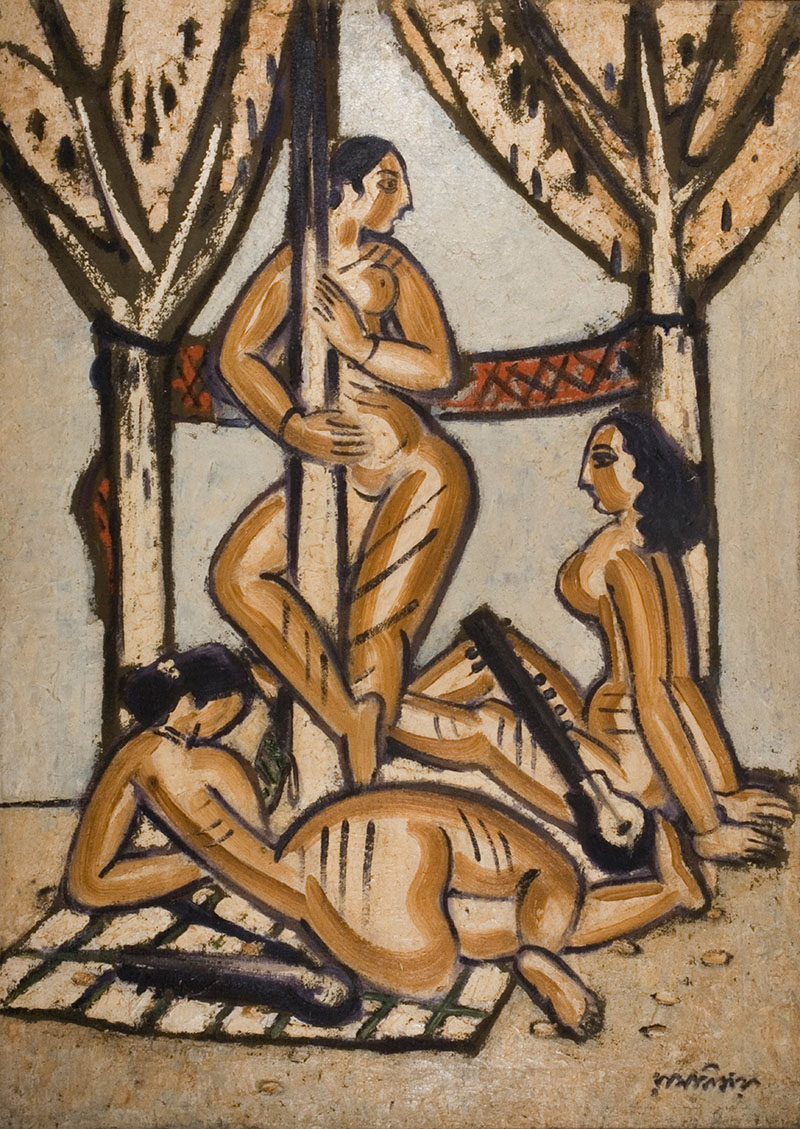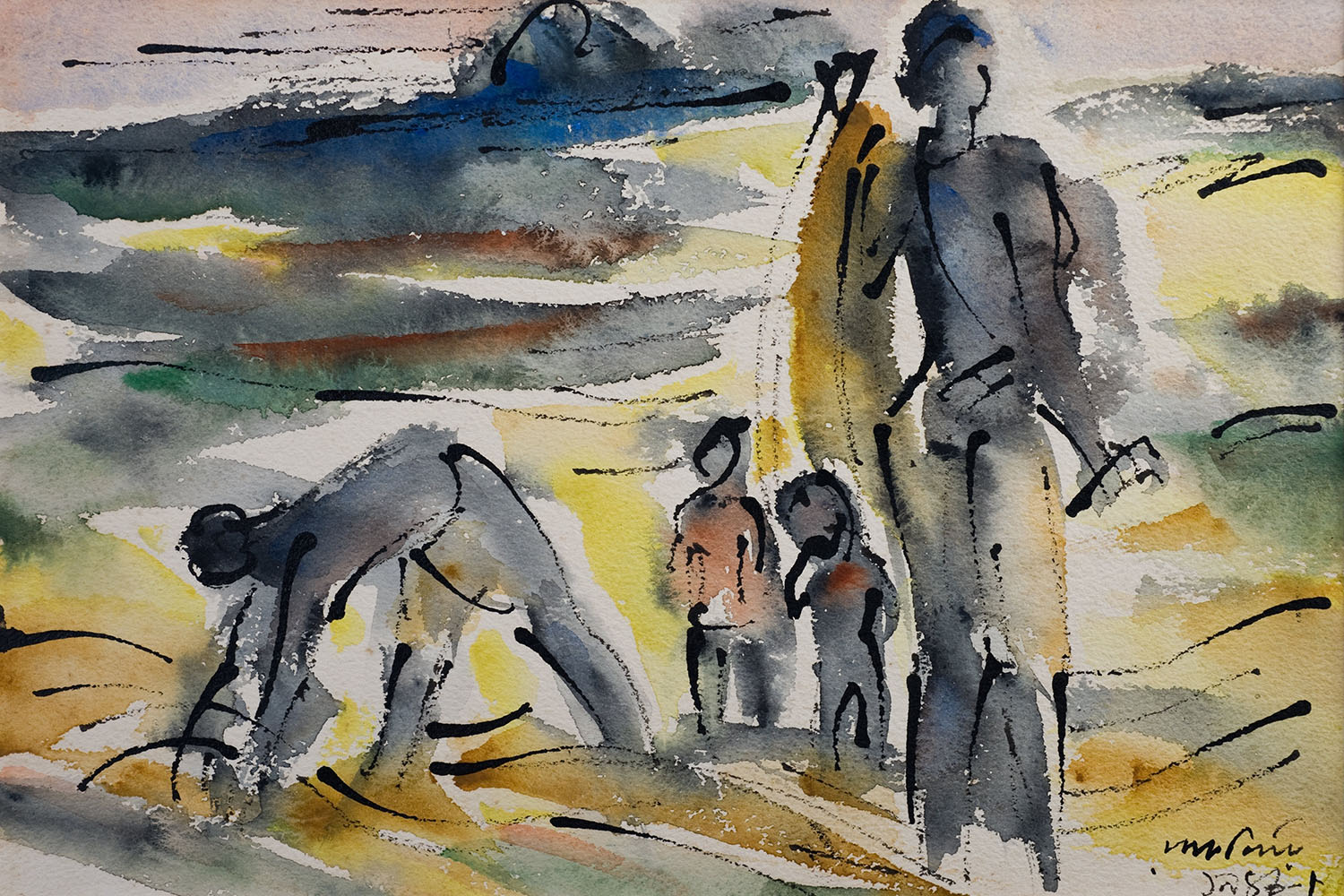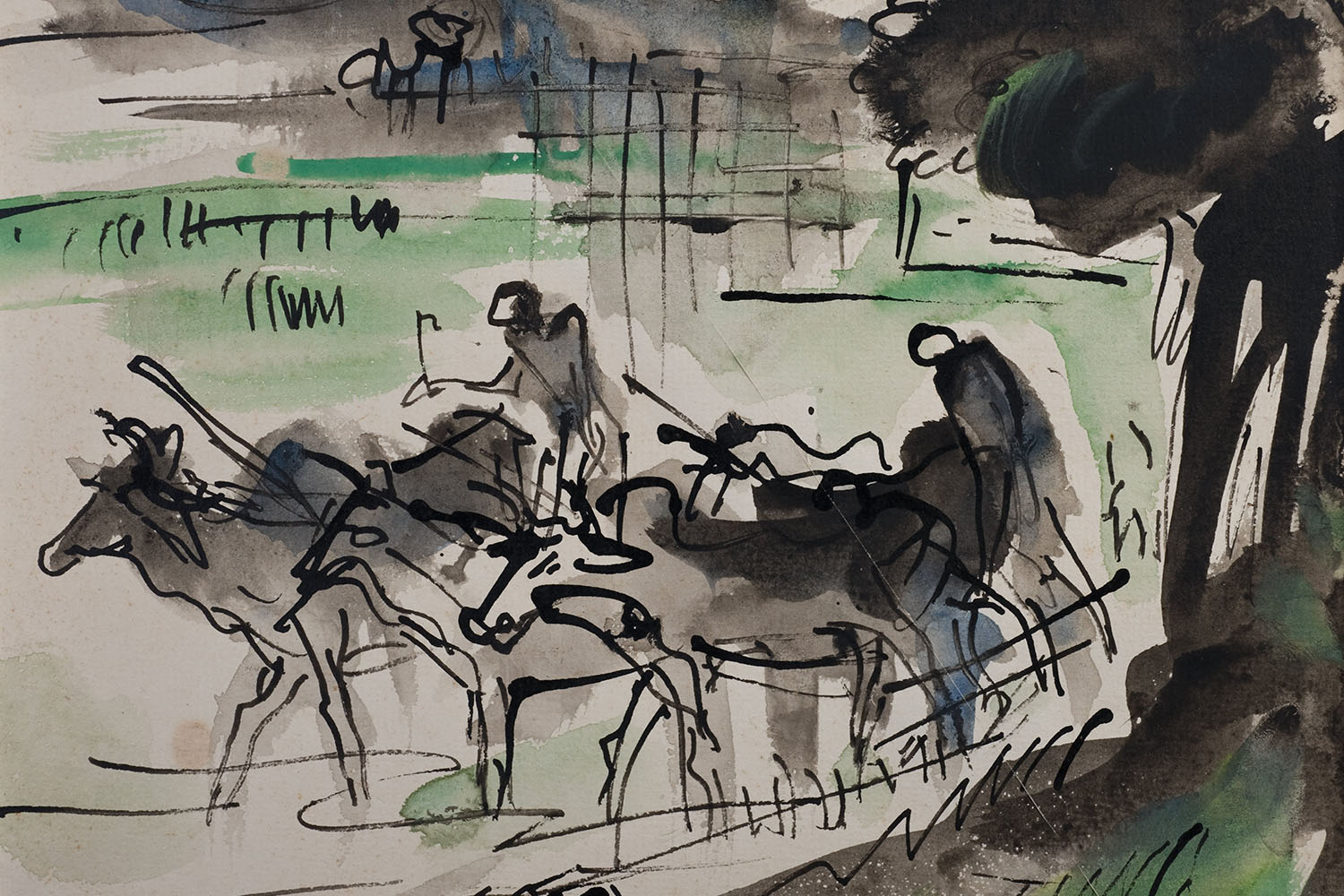ARTICLE
Ramkinkar Baij
The Santhal community that lived on the outskirts of Shantiniketan was one of Baij’s earliest subjects and inspired two of his monumental sculptures — Santhal Family (1938) and Mill Call (1956) — which subverted the established norms of sculpture and followed Romantic styles with delicate features. Additionally, the backgrounds in his works at the time featured thick impasto strokes that create a sense of the figures being knitted onto them. Baij also produced multiple portraits, including Pramod Ganguli (1935), Rabindranath Tagore (1940) and Binodini (1948/1949), often representing the whole body as opposed to just the bust in order to give the viewer a better sense of the subject. In 1943, he also produced the sculpture Famine to document the horrors of the famine that had ravaged Bengal in the same year. In 1955, he was invited by the Indian government to make two sculptures of a yaksha and yakshi for the building of the Reserve Bank of India, New Delhi.
Baij’s work has been displayed at the Salon des Réalités Nouvelles (1950) and the Salon de Mai (1951), Paris; Birla Academy of Art & Culture, Kolkata (1972); and the National Gallery of Modern Art, New Delhi (NGMA) (2012, 2020). In 1970, he received the Padma Bhushan for his pioneering contribution to Indian art, and in 1976, he was made a fellow of the Lalit Kala Akademi and conferred the honorary doctoral degree of Desikottama by Visva-Bharati University. Baij’s works are part of the permanent collections of NGMA as well as other public and private collections. In 1984, a bronze bust of Rabindranath Tagore, fashioned from a 1940 study of the poet by Baij, was installed on the shores of the lake Balaton in Hungary on a promenade named after the poet. The sculpture, which was meant to commemorate Tagore’s stay in the city in 1926, faced heavy criticism for being an inauthentic image of the poet — Tagore looked pensive and unlike any other popular image of himself. In the early 2000s, the sculpture was replaced by an Academic Realist sculpture of the poet.
Baij died in Kolkata in 1980.
Bibliography
Appasamy, Jaya. “Ramkinkar Baij – His Contribution to Contemporary Art.” Critical Collective. Accessed September 18, 2020. https://criticalcollective.in/ArtistInner2.aspx?Aid=429&Eid=604.
Delhi Art Gallery. Manifestations II: Indian Art in the 20th Century. New Delhi: Delhi Art Gallery, 2004.
Dhar, Arshia. “Remembering Ramkinkar Baij, the Legendary Sculptor who Laughed at Critics and Leaking Roofs Alike.” Firstpost, May 28, 2019. https://www.firstpost.com/living/remembering-ramkinkar-baij-the-legendary-sculptor-who-laughed-at-critics-and-leaking-roofs-alike-6690631.html.
Ghosh, Nandini. “Gaganendranath Tagore.” In Art of Bengal: Past and Present, edited by Jogen Chowdhury. Calcutta: Centre of International Modern Art, 2001.
Kazmi, Nuzhat. “Ramkinkar Baij: An Indian Modernist from Bengal Revisited.” Art Etc. Accessed September 18, 2020. https://web.archive.org/web/20171021035447/http://www.artnewsnviews.com/view-article.php?article=ramkinkar-baij-an-indian-modernist-from-bengal-revisited&iid=32&articleid=947.
Kumar, R. Siva. “Baij, Ramkinker.” In Oxford Art Online. 2003. Accessed September 18, 2020. https://doi.org/10.1093/gao/9781884446054.article.T005758.
Mitter, Partha. The Triumph of Modernism: Indian Artists and the Avant-Garde, 1922-1947. London: Reaktion Books, 2007.
Ningthoujam, Diana. “A Portrait of the Muse.” Financial Express, September 10, 2012. https://www.financialexpress.com/archive/a-portrait-of-the-muse/999854/.
Ray, Pranabranjan. “Ramkinkar Baij’s Santhal Family.” Art Etc. Accessed September 18, 2020. http://web.archive.org/web/20200204213332/http://www.artnewsnviews.com/view-article.php?article=ramkinkar-baij-s-santhal-family&iid=35&articleid=1052
Sen, S. C. “An Interview with Ramkinker.” The Visvabharati Quarterly 34, no. 1–4 (January 1971): 81–84.
National Gallery of Modern Art. “Portrait of Rabindranath Tagore.” Google Arts & Culture. Accessed on August 31, 2023. https://artsandculture.google.com/asset/portrait-of-rabindranath-tagore-ramkinkar-baij/XgHAxT-ow7FmFA?hl=en









